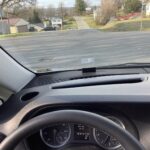Integrating an OBD2 adapter with your Android head unit can significantly enhance your driving experience, offering real-time vehicle diagnostics and performance data directly on your car’s dashboard. However, connecting these two devices isn’t always straightforward. This guide will walk you through the steps to successfully connect your OBD2 adapter to your Android head unit, ensuring a seamless integration.
First, ensure your OBD2 adapter and Android head unit both support Bluetooth connectivity, as this is the most common method for wireless communication. Start by plugging your OBD2 adapter into your car’s OBD2 port, typically located under the dashboard on the driver’s side. Turn on your car’s ignition to power up the adapter.
Next, navigate to the Bluetooth settings on your Android head unit. You might need to access hidden settings or use the search function within settings to find Bluetooth options, as mentioned by some users facing similar issues. Ensure Bluetooth is enabled and initiate a device scan. Your OBD2 adapter should appear in the list of available devices, often identified by its model name or a generic identifier like “OBDII”.
Tap on your OBD2 adapter to initiate the pairing process. You might be prompted to enter a pairing code. Common codes are “0000” or “1234”, but consult your OBD2 adapter’s manual for the correct code. Enter the code when requested by the head unit.
If you encounter issues with pairing, especially with the code entry disappearing or being rejected as incorrect, try these troubleshooting steps:
- Restart Bluetooth: Toggle Bluetooth off and on again on your head unit and retry the pairing process.
- Forget other devices: If you have numerous paired Bluetooth devices, try forgetting some to minimize potential conflicts.
- Check OBD2 Adapter: Ensure your OBD2 adapter is functioning correctly by testing it with a smartphone or another compatible device.
- Head Unit Compatibility: Confirm that your Android head unit is indeed compatible with OBD2 Bluetooth adapters, checking the manufacturer’s specifications.
- Bluetooth App Interference: Some pre-installed Bluetooth apps might interfere with pairing. Try disabling or force-stopping unnecessary Bluetooth applications.
Once successfully paired, you’ll need to use a compatible OBD2 app on your Android head unit to read data from the adapter. Apps like Torque Pro, OBD Fusion, or Car Scanner ELM OBD2 are popular choices, readily available on the Google Play Store. Within the chosen app’s settings, select Bluetooth as the connection type and choose your paired OBD2 adapter.
By following these steps, you should be able to establish a stable connection between your OBD2 adapter and Android head unit, unlocking a wealth of vehicle information and diagnostic capabilities directly on your car’s infotainment system.
